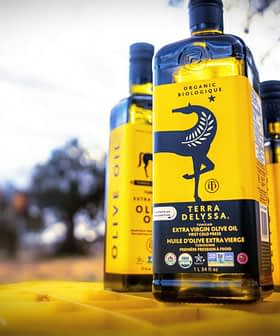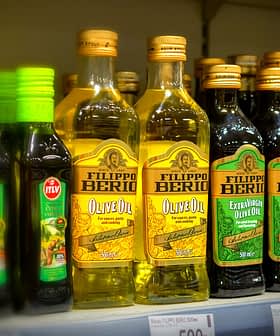Spain Moves to Mitigate Impacts of New U.S. Tariffs

Minister of Agriculture, Fisheries, and Food Luis Planas reassured Spanish agri-food stakeholders about the impact of U.S. tariffs, emphasizing a €14.32 billion support plan and the E.U.-Mercosur agreement as potential solutions. Spanish olive oil exports to the U.S. are not expected to be significantly affected by the tariffs, as declining prices and high consumption in the U.S. market make Spanish olive oil attractive despite potential tariff implications.
At a meeting with leading agri-food cooperatives and associated producers in Spain, Minister of Agriculture, Fisheries, and Food Luis Planas sought to reassure stakeholders about the potential impact of tariffs imposed by the United States.
Planas underlined that Madrid has already drafted a detailed economic support plan worth €14.32 billion to mitigate the effects following the initial announcement of the tariffs.
He acknowledged the uncertainty created by the announcement of 20 percent tariffs on April 2nd, which was followed a week later by the temporary application of a ten percent tariff lasting 90 days.
The Mercosur market is important, but it’s nothing like the United States, neither in terms of volumes nor purchasing power… There is no viable alternative to the U.S. market.
“As a government, we are working to provide direction and certainty,” he said, emphasizing close collaboration with European Union partners to strengthen resilience and empower negotiations with the U.S.
Interestingly, Planas cited the E.U.-Mercosur agreement as an example of market diversification and expansion opportunities for agri-food producers.
The E.U.‘s free-trade agreement with Mercosur is gaining traction across Europe following the announcement of new U.S. tariffs.
See Also:Latest Tariff UpdatesAccording to Planas, crucial Spanish export sectors, such as olive oil and wine, would greatly benefit if E.U. members approved the comprehensive trade agreement with Latin American partners.
However, Rafael Pico, the executive director of the Spanish olive oil industry and export association Asoliva, recently told RTVE that the E.U.-Mercosur agreement would only allow a gradual reduction of tariffs over a 15-year period.
“The Mercosur market is important, but it’s nothing like the United States, neither in terms of volumes nor purchasing power,” he said.
“Per capita income in the United States supports olive oil imports. Unfortunately, the same cannot be said for South American countries. There is no viable alternative to the U.S. market,” Pico added.
Regarding overall agri-food exports, Spain’s exposure to the U.S. market is relatively limited.
In 2024, exports to the United States accounted for 4.8 percent of Spain’s total agri-food exports, totaling approximately €4 billion.
By comparison, Spanish agri-food producers exported significantly more to France in 2024: €11.5 billion, which accounts for 15.3 percent of total agri-food exports.
In this context, olive oil represents about 28 percent of all Spanish agri-food exports to the United States.
When it comes to olive oil specifically, the volume of Spanish exports to the United States ranks second only to shipments sent to Italy.
In 2023, Spain’s Institute of Foreign Trade (ICEX) in New York estimated that Spanish olive oil shipments represented approximately 41 percent of total U.S. olive oil imports.
According to European Union figures, Spain exported more than 118,000 metric tons of olive oil directly to the U.S. in the 2023/24 crop year.
This figure is expected to increase considerably in the current season due to greater availability and lower prices.
Still, these volumes account only for direct shipments from Spain to the U.S. and do not include Spanish olive oil reaching the U.S. via other countries.
In the 2021/22 crop year, direct exports of Spanish olive oil to the U.S. exceeded 160,000 tons.
“The new tariffs imposed by the United States are unlikely to have any significant impact on the Spanish olive oil sector,” Juan Vilar, a strategic consultant for the olive oil sector, told Olive Oil Times.
According to Vilar, there are several relevant trends to consider, primarily the declining olive oil prices.
“We are at the beginning of a cycle where production exceeds demand. As a result, prices are gradually falling,” he said.
This trend means that Spanish olive oil will become cheaper on the U.S. market.
We need to understand the situation clearly. We are at the start of a new Trump era. Right now, the best move is not to move at all.
“American consumers who were paying up to $22 per liter of olive oil over the past two years will now pay perhaps around $17,” Vilar said.
“They will not significantly feel the impact of the tariffs. Ultimately, consumers will still buy olive oil at lower prices than before, even with the full tariff applied,” he added.
According to Vilar, olive oil tariffs should be removed altogether.
“Olive oil is not strategically important for the United States. It is more about consumption, which has grown significantly over recent decades,” he explained.
According to the International Olive Council (IOC), U.S. olive oil consumption in the current season could approach 400,000 tons, surpassing Italy (395,000 tons) and nearing Spain’s consumption (460,000 tons).
“American domestic olive oil production covers only a fraction of this demand, making the U.S. market very attractive for Spanish producers,” Vilar added.
The IOC estimates that U.S. companies produced approximately 13,000 tons annually over the past five years on average.
“Spain is by far the largest olive oil producer in the world. Let’s also consider other EU producers and exporters, such as Italy and Greece, which are major exporters to the U.S. The E.U. will inevitably remain the most important olive oil trading partner for the United States,” Vilar said.
“In such a scenario, the first to bear the cost of tariffs will be U.S. import companies, followed by U.S. consumers, and eventually smaller Spanish exporters lacking bottling facilities in the U.S.,” he added.
Uncertainties remain not only about the tariffs but also regarding their scope. During the previous Trump administration, Spanish bottled olive oil was subject to a 25-percent tariff, while bulk shipments remained unaffected.
“That situation prompted large Spanish producers to establish bottling facilities in the United States,” Vilar noted.
Luis Carlos Valero, manager and spokesperson for the farming association ASAJA Jaén, warned of potential consequences if tariffs were applied to bulk shipments as well.
“If Trump also includes bulk olive oil, he would be shooting himself in the foot, as the entire distribution and bottling industry is located in the United States,” Valero stated.
Vilar explained that of approximately 130,000 tons of olive oil Spain could export to the United States, only around 25,000 tons would be bottled, with the rest shipped in bulk.
Most bottled products would originate from smaller producers without existing bottling facilities in the U.S.
“We need to understand the situation clearly. We are at the start of a new Trump era. Right now, the best move is not to move at all,” Vilar concluded.







